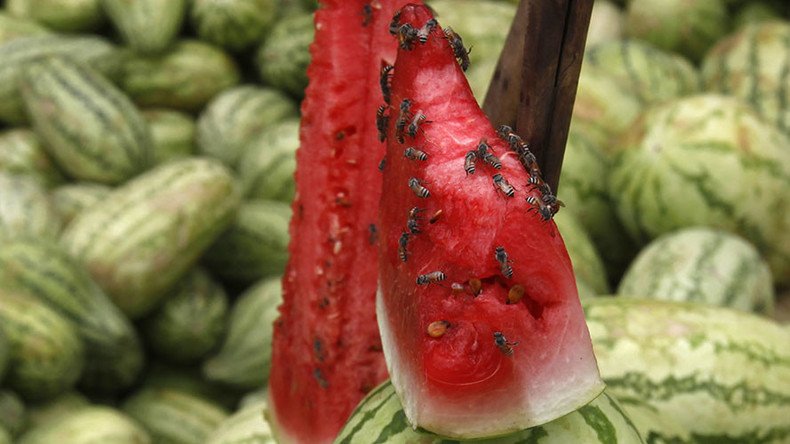Snacks, not attacks: Angry honey bees stop in their tracks when food’s around

A hungry bee is an angry bee, but they can’t stay mad when there are snacks to be had. According to a recent study out of the University of Toulouse and University of Queensland, angry honey bees are easily distracted by food.
Smells are important to bees, as they communicate through the smells of secreted pheromones. But the insects do not only respond to their own scent-based chemicals. The study led by Martin Giurfa and Judith Reinhard tested the effects of floral odors on bees that have been exposed to their alarm pheromones, or a scent that triggers an angry or aggressive response.
The study exposed bees to a moving target and an alarm pheromone. When the bees saw the moving target without the presence of an alarm pheromone, they were initially slow to attack. When the bees were exposed to the alarm pheromone, they would attack almost immediately.
2 million bees escape crashed vehicle, paralyze busy Chinese highway (VIDEO) https://t.co/hV9m2a9oHRpic.twitter.com/DQPsoXa9q3
— RT (@RT_com) November 26, 2015But when the bees were exposed to the alarm pheromone and a floral scent, they wouldn’t attack. Instead, they calmed down.
Many people who have been stung by a honeybee can attest to the fact that one sting seems to attract more bees and more stings. This is due to the alarm pheromone that bees release when they see either certain colors or predatory-like movements. Once other bees detect the pheromone, they go on high alert and prepare to swarm on the predator (or unlucky individual who happens to be walking too close to a hive).
Common pesticide could hinder bumblebees’ ability to pollinate plants – study https://t.co/kvOFCZ6dV2pic.twitter.com/V3xeUWilEy
— RT America (@RT_America) November 19, 2015This could mean big things for beekeepers, since they are more likely to develop allergies to bees because of their frequent exposure to venom.
"Developing a product based on our results – for example a scented hand spray [or] cream, or an odor-releasing device to place at the hive entrance – could certainly help reduce the number of bees stinging while [beekeepers are] handling the hives,” Morgane Nouvian of University of Queensland and University of Toulouse explained to Live Science.
Coffee buzz: Honey bees are caffeine fiends http://t.co/Cp0sibLUbupic.twitter.com/7p38xfGQSv
— RT America (@RT_America) October 17, 2015When bees aren’t being calmed by the scent of lavender, they may be seeking out caffeine. In an unrelated study publish in Current Biology in October, if a bee is exposed to caffeinated nectar they will forage for nectar at a rate four times the usual number. However, they will ignore nutritious but decaffeinated nectar in lieu of sweet, sweet caffeine.
Between being disarmed with snacks and a caffeine addiction, it sounds like honeybees would be an excellent middle management employee.












